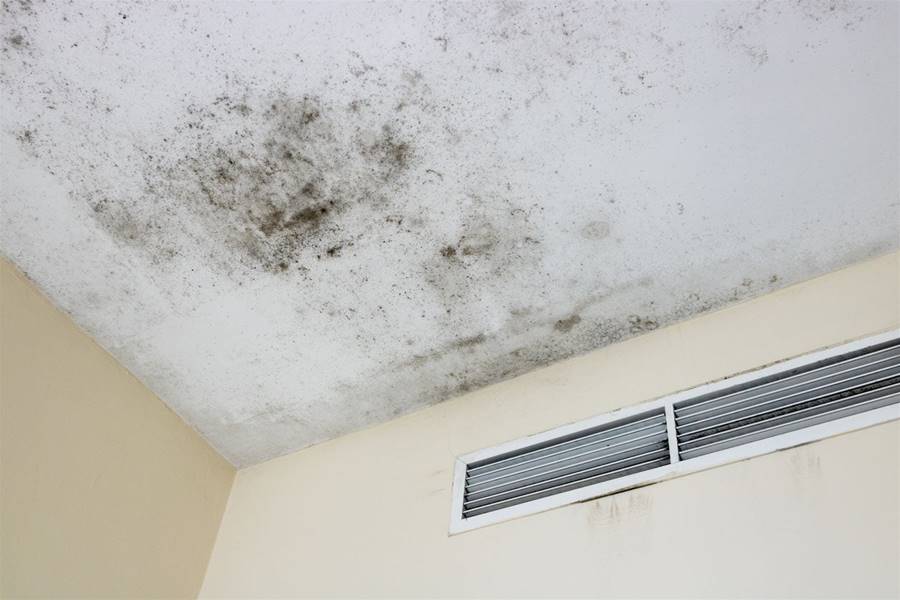

Mold can grow on a ceiling for various reasons, including excess humidity and liquid moisture.
In bathrooms, it is common to find mold on the ceiling when warm, moist air from the shower or bathtub contacts the cooler ceiling material, leading to condensation and mold growth.
Mold on the ceiling can appear as small circles or irregularly shaped patches. It can be black, brown, gray, white, orange, pink, green, or yellow in color. Identifying the type of mold and properly removing it is crucial.
To prevent mold growth, it is important to clean mold from bathroom ceilings as quickly as possible. Once the mold is removed, steps should be taken to reduce humidity and improve ventilation in the room.
The United States Environmental Protection Agency (EPA) states that DIY methods can be used for areas of mold growth that are less than 10 square feet. For larger areas, it is recommended to hire a professional mold removal company.
Bathrooms are particularly susceptible to mold growth due to excess moisture and poor ventilation. Mold thrives in such conditions. It can also be caused by plumbing failures or roof leaks. Finding and addressing the source of moisture is crucial to prevent future mold growth.
Household substances like vinegar, baking soda, bleach, hydrogen peroxide, essential oils, and lemon juice can be used to kill and remove mold from bathroom walls and ceilings.
Proper protective equipment should be worn when dealing with mold to avoid health issues.
It is important to wear protective equipment, such as a respirator, mask, eye protection, and gloves, to avoid respiratory issues, skin rashes, and other health problems caused by mold exposure.
Vinegar: Distilled white vinegar is the most effective type for killing mold. Fill a spray bottle with undiluted vinegar, spray the affected area, and let it sit for an hour. Scrub with a brush and rinse with clean warm water.
Baking soda: Mix 1 teaspoon of baking soda with 2 cups of water in a spray bottle. Spray the area, scrub with a sponge or brush, rinse with water, and let it air dry.
Baking soda also removes the moldy smell.
Bleach: Mix 1 part bleach with 10 parts water. Apply the mixture with a spray bottle or sponge to remove surface mold and stains. Avoid mixing bleach with other cleaners or vinegar, and work in a well-ventilated area.
Hydrogen peroxide: Use undiluted hydrogen peroxide with more than 3 percent concentration. Spray or sponge it onto the mold, let it sit for 10 minutes, and scrub with a brush or sponge. Dry the area with a cloth.
Essential oils: Tea tree oil is effective for removing mold. Mix 1 tablespoon of the oil with 1 cup of water in a spray bottle. Spray the mixture on the mold, let it sit for an hour, and scrub with a cloth or brush.
Be cautious with essential oils and pets. Lemon juice: Spray fresh lemon juice on the mold, let it sit for 5 minutes, and scrub with a sponge or brush.


